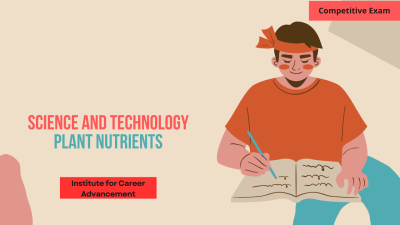Plant Nutrients
Plant nutrients are essential elements required by plants to grow, develop, and complete their life cycle. These nutrients are absorbed from the soil and are vital for processes such as photosynthesis, cell division, and protein synthesis. Plant nutrients are categorized into macronutrients (needed in large amounts) like nitrogen (N), phosphorus (P), potassium (K), calcium (Ca), magnesium (Mg), and sulfur (S), and micronutrients (required in smaller amounts) like iron (Fe), manganese (Mn), zinc (Zn), copper (Cu), and boron (B). A balanced supply of these nutrients is essential for optimal plant health, growth, and productivity. উদ্ভিদের পুষ্টি হল উদ্ভিদের বৃদ্ধি, বিকাশ এবং তাদের জীবনচক্র সম্পূর্ণ করার জন্য প্রয়োজনীয় প্রয়োজনীয় উপাদান। এই পুষ্টিগুলি মাটি থেকে শোষিত হয় এবং সালোকসংশ্লেষণ, কোষ বিভাজন এবং প্রোটিন সংশ্লেষণের মতো প্রক্রিয়াগুলির জন্য গুরুত্বপূর্ণ। উদ্ভিদের পুষ্টিগুলিকে ম্যাক্রোনিউট্রিয়েন্টে (প্রচুর পরিমাণে প্রয়োজনীয়) শ্রেণীবদ্ধ করা হয় যেমন নাইট্রোজেন (এন) ফসফরাস (পি) পটাসিয়াম (কে) ক্যালসিয়াম (সিএ) ম্যাগনেসিয়াম (এমজি) এবং সালফার (এস) এবং মাইক্রোনিউট্রিয়েন্ট (অল্প পরিমাণে প্রয়োজনীয়) যেমন লোহা (ফে) ম্যাঙ্গানিজ (এমএন) দস্তা (জেডএন) তামা (কিউ) এবং বোরন (বি)। উদ্ভিদের সর্বোত্তম স্বাস্থ্য, বৃদ্ধি এবং উৎপাদনশীলতার জন্য এই পুষ্টিগুলির একটি ভারসাম্যপূর্ণ সরবরাহ অপরিহার্য।
English
Last updated
Thu, 13-Feb-2025



















